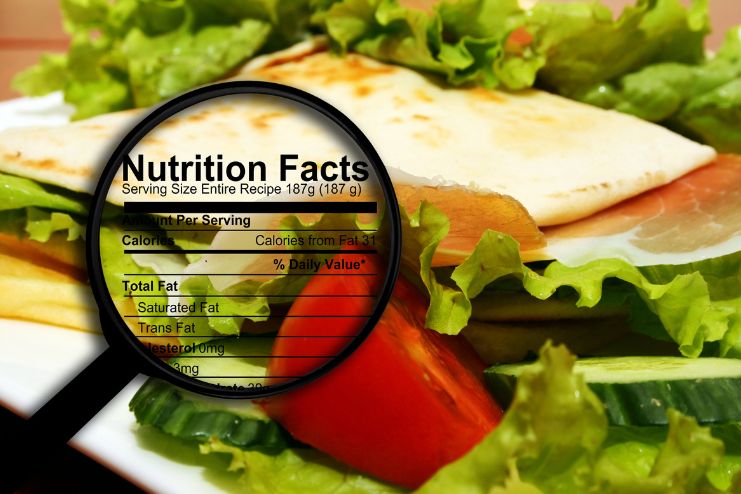In the modern world, food labels are vital resources that give us the information we need to make educated dietary decisions. However, due to the growing quantity of food products available on the market, it might be difficult to comprehend the information on food labels.
These labels provide information that directly affects our health and well-being, including ingredients, nutritional values, allergens, and serving quantities. However, consumers frequently misunderstand this complicated language, which creates uncertainty and hinders their ability to make better decisions.
This article explains food labels by analyzing the key elements and how each influences human decision-making. By the end, readers will have the skills to understand food labels better and select items that suit their dietary requirements and health objectives. Knowing what you’re eating is only one aspect of reading food labels; another is making thoughtful choices to enhance your general health.
Read More: Are Artificial Food Dyes Causing Hyperactivity in Children?
Section 1: The Basics of Food Labels

Food labels provide helpful information when choosing what to eat and drink with your family. Although the information needed varies depending on the product type, most packaged foods must have a label providing this information.
The Nutrition Labeling and Education Act of 1990 mandated the use of the Nutrition Facts label, now regulated by the U.S. Food and Drug Administration (FDA), to help consumers make a quick and informed choice about the foods they eat.
It has been changed; the most recent version was published in 2016. Organizations typically make modifications in response to public feedback on usability and new scientific data. As of January 2020, all food producers were mandated to implement these modifications on their goods’ Nutrition Facts labels.
Most prepackaged goods feature a label with nutritional information on the side or back of the container. This information helps you maintain a healthy diet.
These labels increase transparency in the food sector and raise customer knowledge. By reading food labels, customers can make better decisions about their tastes, dietary needs, and overall health.
Understanding food labels is essential to maintaining a balanced and healthful diet, regardless of your goals—whether you want to control your weight, avoid allergens, or consume more of a certain vitamin.
Food labels include both required and optional information. All packaged foods must have mandatory ingredients listed on the label, as required by law. These consist of:
Serving Size: The product’s suggested portion size informs customers how much food makes up a serving.
Calories: An essential metric for controlling energy consumption is the total number of calories in a single serving.
Nutritional Data: This comprises information on micronutrients (vitamins and minerals), macronutrients (fats, proteins, and carbs), and other vital dietary elements (sugar and fiber).
Ingredients List: A comprehensive list of all the ingredients required to create the product, arranged by weight in descending order, meaning the ingredient that weighs the most is listed first, and the least one is listed last.
However, producers may include optional information, as the law does not mandate it. Typical voluntary elements consist of the following:
Allergens: Details on possible allergens like dairy, gluten, or nuts, while some manufacturers might provide more information about allergies than is necessary.
Health Claims: Phrases like “low in fat” or “supports heart health” may imply possible health advantages, albeit they are frequently regulated.
Read More: How to Spot ‘Healthy’ Foods That Are Actually Harmful
Section 2: Understanding Key Nutrients

Figuring out nutritional information might be challenging. We can assist, which is terrific news.
You’re not the only one confused by statements about food composition. Reduced fat, low fat, and fat-free. Reduced cholesterol versus low cholesterol. Making the proper decisions can be complicated.
“Using the Nutrition Facts label on food and beverage packages is a simple method to make healthier food choices,” said Susan R. Bailey, MD, immediate past president of the American Medical Association.
Size of Serving: Examine the serving size first. The specified serving size is the basis for all the label information. If you eat more than what is defined, you will consume more calories, carbs, and other nutrients.
Calories: Calories are a unit of energy representing the energy your body utilizes for internal processes. If you are wondering how many calories you require, speak with an RD/RDN or registered dietitian nutritionist.
Carbohydrates: The body uses carbohydrates as the primary energy source. Your brain, muscles, and organs are powered by glucose, which is produced when carbohydrates are broken down. All three forms of carbohydrates—sugar, starch, and fiber—are included in the total carbohydrate listed. Using total grams is crucial when determining which foods to include or counting carbohydrates. The label breaks down the types of carbohydrates in the diet below the Total Carbohydrate (carbs) section.
Added Sugar: Added sugar must be listed on the food labels so that consumers can distinguish between sugar added during the processing and sugar naturally present in the item. Numerous labels have already changed.
Fiber is the portion of plant meals that is either not digested at all or, in the case of some varieties, only partially digested. Fiber-rich foods include whole grains, fruits, vegetables, and dried beans such as kidney or pinto beans. Your age and gender will determine how much fiber you require.
Fats: The nutrition label shows the total fat content per serving of the food. To reduce the likelihood of heart disease, it’s recommended to replace foods rich in unhealthy trans and saturated fats with options that are abundant in healthier monounsaturated and polyunsaturated fats.
Sodium: People know salt by its scientific name, sodium. It does not affect blood sugar. On the other hand, eating too much sodium raises the risk of heart disease and high blood pressure. However, many goods, including canned soups, lunch meat, salad dressings, and other packaged meals, can contain concealed salt. You can compare the salt content of various foods and identify these hidden sources by reading labels.
According to Paige Schaefer, MS, RDN, LD, a clinical registered dietitian at Daviess Community Hospital (DCH), nutrition labels empower individuals to take charge of their health by clearly identifying the ingredients in food. They’re crucial for maintaining a healthy weight, controlling medical issues, and avoiding deceptive advertising.
Read More: Hidden Sugars in Your Favorite Foods (and How to Avoid Them)
Section 3: Cracking the Label Jargon

Food labels frequently use catchy buzzwords that might be misleading if not thoroughly understood. Although words like “natural,” “organic,” and “low-fat” seem healthful, they each have a specific meaning and occasionally unspoken implications.
Natural: Doesn’t it sound wholesome? The worst part is that “natural” isn’t properly regulated. It should mean that the product doesn’t contain any artificial flavors or additives. Even “natural” products may still have additives or processed materials. Verify the ingredients list at all times!
Organic: When producers label a food as organic, they make it without using artificial fertilizers, pesticides, genetically modified organisms (GMOs), or antibiotics for animal products. Although organic products are excellent for lowering chemical exposure, they do not give you the right to eat anything you want.
Low Fat: It’s a little sassy but low fat, which indicates that each serving has no more than 3 g of fat. Manufacturers frequently add sugar or salt to compensate for the lost flavor, even though the fat level may be lower. So, “low-fat” yogurt may not be as beneficial as it appears.
No Sugar Added: Indeed, manufacturers add no extra sugar during production. However, the product may still contain hidden artificial sweeteners or natural sugars. That fruit drink with “no added sugar”? It may include more sugar than you prefer.
Regulatory bodies such as the FDA determine serving sizes based on the average quantity that people usually eat rather than what is optimal or healthful. For instance, a chip bag may list a portion size of 15 chips, but most individuals consume much more in a single sitting.
Regarding serving sizes are as follows:
- Serving size does not indicate how much amount of food or liquid you should consume.
- A single package may include multiple servings.
- Certain packages feature a “dual-column” label format—one side presents the nutritional values and calories for a single serving, while the other outlines the totals for the whole package. This format helps you see exactly what you’re taking in if you decide to eat or drink everything inside at once.
Read More: Understanding and Managing Food Intolerances in Children
Section 4: Tips for Interpretation

Effectively reading food labels is a functional ability that can promote healthier eating habits and general well-being. Following practical advice can assist you in making better sense of food labels:
First things First: Always check the serving size. Amount is the foundation for any nutritional statistics on the label. If your consumption changes, you’ll need to modify the values.
Examine the Calories: Recognize the number of calories in each portion, particularly if you’re trying to control your energy intake or weight.
Examine the list of Ingredients: The Food label lists all the ingredients by weight in descending order. Select goods with fewer ingredients and avoid those that contain sugar, salt, or harmful fats in the first few ingredients.
Pay attention to the % Daily Value: This tells you how much of a nutrient in a meal counts toward your daily intake. Aim for minimal saturated fat, salt, added sugars, and high fiber, vitamins, and minerals.
Food packaging can be misleading, frequently employing marketing gimmicks to make the product seem healthier than it is. Red flags to look out for include the following:
“Sugar-free” does not equate to being healthy: Artificial sweeteners and other harmful substances can still be present in these items.
“Made with whole grain” as opposed to “whole grain”: The latter may contain only a tiny quantity. Always look at the ingredient list to find out if whole grains are listed first.
Among all the nutrients, fats are arguably the most controversial and misinterpreted. However, one thing is sure: you should avoid trans fats entirely and keep the saturated fats to a minimum.
Read More: Mastering the Aisles: Your Guide to Healthy Choices at the Grocery Store
Conclusion
Reading food labels is one of the most effective steps to adopting healthier eating habits. From calories and serving sizes to essential minerals and substances, these labels give you vital information about what you’re putting into your body. Accurately reading food labels gives you more control over your diet, whether your goal is to control weight, avoid allergies, or just eat a healthier diet.
Even though food labels can occasionally appear complicated or daunting, being able to read them helps you make better, more informed choices while you’re at the grocery store. You are now making decisions based on facts rather than flashy marketing claims.
Now that you know the fundamentals of food labeling, spend some time reading and contrasting labels when shopping. Making small, thoughtful changes to your decisions might result in long-term health gains.
References
- https://www.betterhealth.vic.gov.au/health/healthyliving/food-labels
- https://www.nhs.uk/live-well/eat-well/food-guidelines-and-food-labels/how-to-read-food-labels/
- https://kidshealth.org/en/teens/food-labels.html
- https://scienceforgeorgia.org/knowledge-base1/what-do-all-those-food-labels-mean/
- https://www.fda.gov/food/nutrition-food-labeling-and-critical-foods
- https://pmc.ncbi.nlm.nih.gov/articles/PMC11604316/
- https://labelcalc.com/what-nutrients-are-optional-on-the-food-label-voluntary-nutrition-information/
- https://www.safefood.net/getattachment/79e9d4a4-d352-4d2a-9085-6c1fac67999b/Transition-Year-_Classroom-Slides_2015Topic2.pdf
- https://food.ec.europa.eu/food-safety/labelling-and-nutrition/food-information-consumers-legislation/voluntary-food-information_en
- https://www.fda.gov/food/nutrition-facts-label/how-understand-and-use-nutrition-facts-label
- https://diabetes.org/food-nutrition/reading-food-labels/making-sense-food-labels
- https://www.ideafit.com/cracking-the-code-on-food-and-nutrition-labels/
- https://www.fda.gov/food/nutrition-facts-label/serving-size-nutrition-facts-label
- https://www.earthsbest.com/helpful-stuff/understanding-food-labels
- https://www.ama-assn.org/delivering-care/public-health/help-patients-understand-nutrition-facts-labels-eat-smarter#
- https://www.hackensackmeridianhealth.org/en/healthu/2023/09/19/nutrition-label-red-flags
- https://www.realsimple.com/red-flags-on-food-labels-8781749
- https://nutritionsource.hsph.harvard.edu/food-label-guide/
- https://www.ama-assn.org/about/authors-news-leadership-viewpoints/susan-r-bailey-md
- https://www.ama-assn.org/delivering-care/public-health/help-patients-understand-nutrition-facts-labels-eat-smarter
- https://www.dchosp.org/find-a-provider/paige-schaefer-ms-rdn-ld/
- https://www.dchosp.org/news/2025/march/how-to-read-nutrition-labels-a-guide-to-smarter-/
In this Article


















